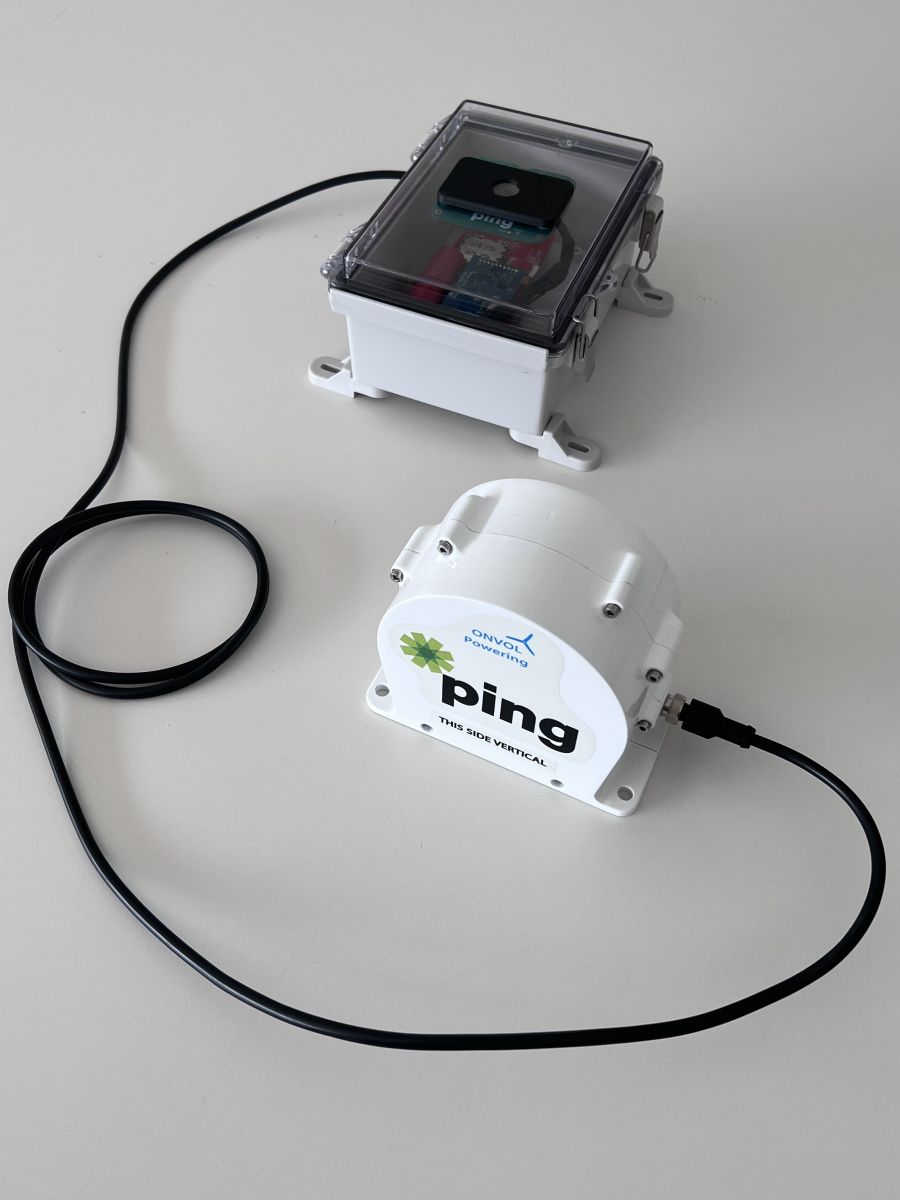Rooting Out Blade Damage
Wind farm operators across the globe agree that, while providing improved efficiencies to the wind industry, optimized wind turbine blade design presents unique challenges in operations and maintenance.
Thanks to unique composite and manufacturing practices, longer and lighter blade structures deliver increased energy generation. These advances also make them more vulnerable to structural damage than designs of the past.
The most highly-loaded zone of any turbine blade is called the “root zone”. With blades now measuring over 300 feet in length and weighing many tons, that root zone is especially susceptible to damage from cracking and delamination, as well as other types of damage.

Lost profitability through catastrophic failure
If not detected and remedied quickly, root zone damage will propagate rapidly; this can lead to catastrophic failure, resulting in lost productivity and the potential for millions of dollars in blade replacement. Even worse, unchecked damage that begins in the blade can end up forcing replacement of the entire turbine.
It is now widely accepted that periodic visual inspections alone aren’t enough to protect productivity and profitability. The common practice of an annual blade inspection leaves operators flying blind between scheduled check-ups, increasing the vulnerability of blade integrity.
The challenges of traditional inspection methods
The economy of traditional blade inspection methods for an entire fleet of turbines doesn’t always stack up against the limitations of resources and budgets. Not only are visual inspections time consuming, but they often demand levels of people power not readily available in the sector today.
- Drone inspections provide comprehensive data reports, but the resources required to review and analyze this information is another drain on human resources, and can render the data meaningless if left untapped.
- Robotic inspections are an emerging technology that may prove useful for targeted investigations. However, they may be too costly for routine inspections.
- Rope access inspections present significant safety risks that leave operators exposed to liability and work health safety issues.
The practice of continuous monitoring has emerged as an economical method of pin pointing issues, while utilizing limited resources to target inspections as soon as they’re required.
.jpg)
Continuous blade monitoring gaining momentum
Continuous blade monitoring is experiencing rapid uptake due to its proven success in providing real-time insights that prevent damage from developing to catastrophic levels.
The US Department of Energy recognized the potential of continuous sound-based monitoring systems by awarding $1.4million to Associate Professor Murat Inalpolat, a mechanical engineer from the University of Massachusetts Lowell, to investigate how acoustic blade monitoring could detect blade damage the moment it occurs. Also awarded to the study was $1.1million by the National Science Foundation, the university’s WindSTAR Center, and the Massachusetts Clean Energy Center.
The funding was used to develop a low cost, robust, and reliable system that uses acoustic technology to continually measure the condition and safety of turbine blades, allowing operators to schedule an appropriate and targeted maintenance response.
The 2021 WindSTAR annual report concluded that Professor Inalpolat’s project had successfully shown the feasibility of the proposed technique in the laboratory and in the field.
 Continuous Acoustic monitoring – how does it work?
Continuous Acoustic monitoring – how does it work?
A continuous acoustic blade surface monitor measures and analyzes changes in the sound generated by tip and mid-span blade damage from hazards such as lightning, ice build-up, splits, holes, and erosion.
A surface blade monitor attaches to the turbine and receives sound from the blades via the microphone in the monitor. The sounds are then processed through different algorithms to identify changes in the frequency response. The data is then sent to a cloud-based system for analysis and generation of a blade conditions report.
The in-blade solution
Rather than being mounted on the outside of the turbine tower, an in-blade monitor, (like the one developed by Professor Inalpolat) is fitted inside the blade’s structural cavity. It uses sound emission to detect root zone structural damage.
Cracks and delamination in the first third (root zone) of the blade make a sound as they are loaded and unloaded, or as the forces fluctuate. Sounds are also made as cracks propagate. An in-blade monitor listens for these sounds, which are audible inside the blade, and alerts operators to the defect, all in real time.
By increasing maintenance efficiencies, and mitigating catastrophic damage costs, the innovation of 24/7/365 blade monitoring is set to save the wind industry millions of dollars.
Angela Krcmar is Chief Revenue Officer at Ping, which helps wind farm owners and operators improve wind turbine blade performance, optimize maintenance, and save on unnecessary costs and risks.
Ping | ping.services
Author: Angela Krcmar
Volume: 2023 January/February








